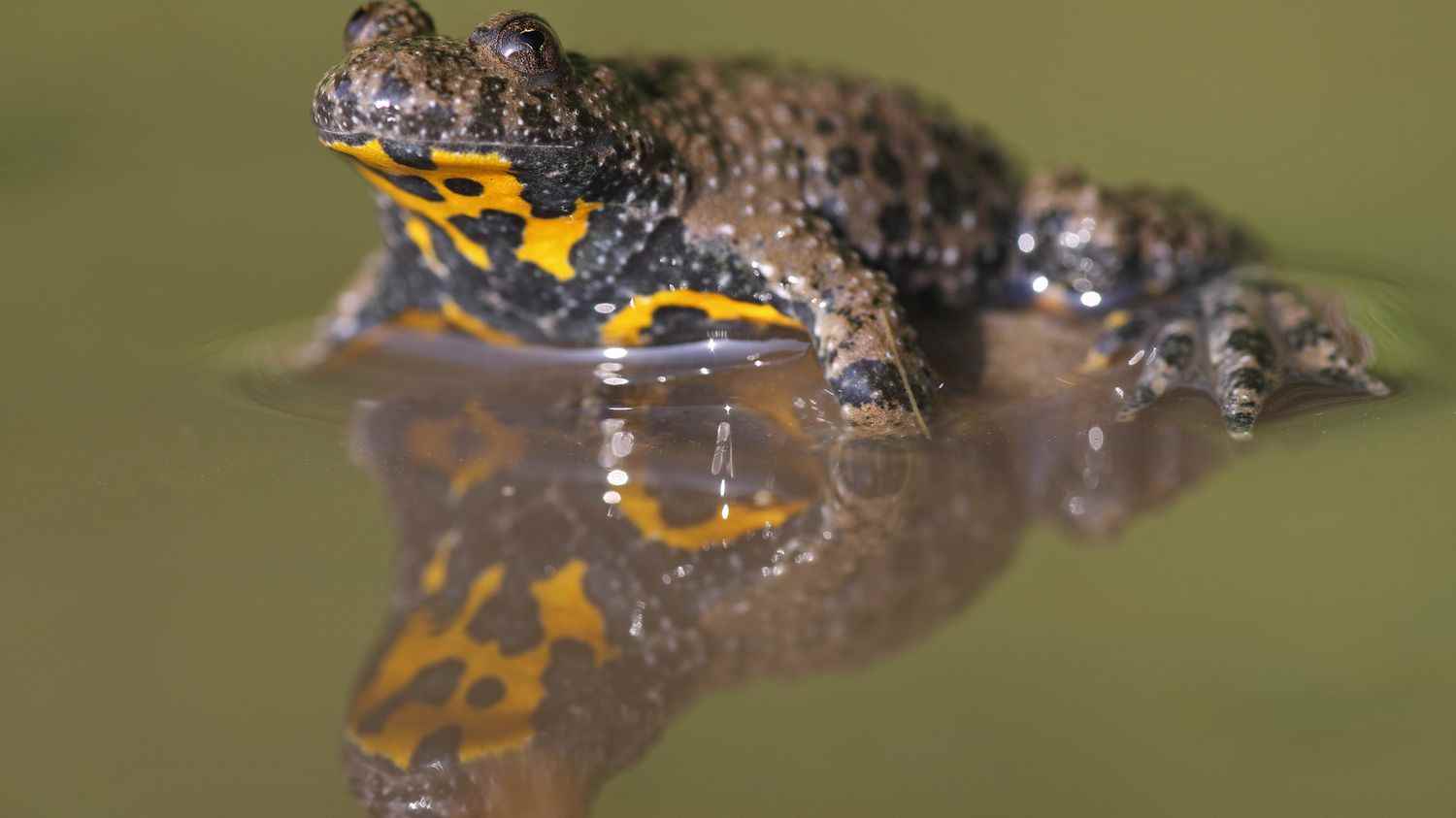After 25 years of research, CNRS researchers have been able to determine that these amphibians activate a particular way of life, especially when their living space is invaded by humans.
Article written by
Posted
Update
Reading time : 1 min.
Humans occupy 95% of the earth’s surface, which very often affects the survival of wildlife, particularly amphibians and toads. To find out how these animals adapt, 60 scientists followed for 25 years, in Europe, 21,000 yellow-bellied toads, 5 cm batrachians that live in ponds or puddles in the forest.
If the researchers chose this species, it is because these toads have unique and personal black spots on their yellow belly: it is therefore easier to follow them. Conclusion of this work coordinated by the National Center for Scientific Research (CNRS): to save their species, these toads are accelerating their life cycle.
This toad grows and ages faster in a hostile environment. In areas colonized by humans, this yellow-bellied toad lives on average seven years instead of 12. It also reproduces earlier and more extensively. He therefore lives less long, but wants to ensure sufficient offspring. This phenomenon, called “compensatory recruitment”, is 93% higher in human-inhabited areas than in natural habitats. It is a very rare phenomenon in nature, and it is the first time that it has been reported in an animal species in response to human presence.
This is an effective strategy because it effectively allows toad populations to sustain themselves. The rate of population growth is the same in human-modified areas as in the natural environment. But this strategy of accelerated life and reproduction comes at a price. It expends a lot of energy and this weakens the species in the face of heat or certain diseases.
In a context of global warming, it is therefore not certain that this strategy can work in the long term. Hence the importance of pursuing safeguard policies, say the researchers because in general, whether there is human presence or not. 45% of observed toad populations are now in decline across Europe.
